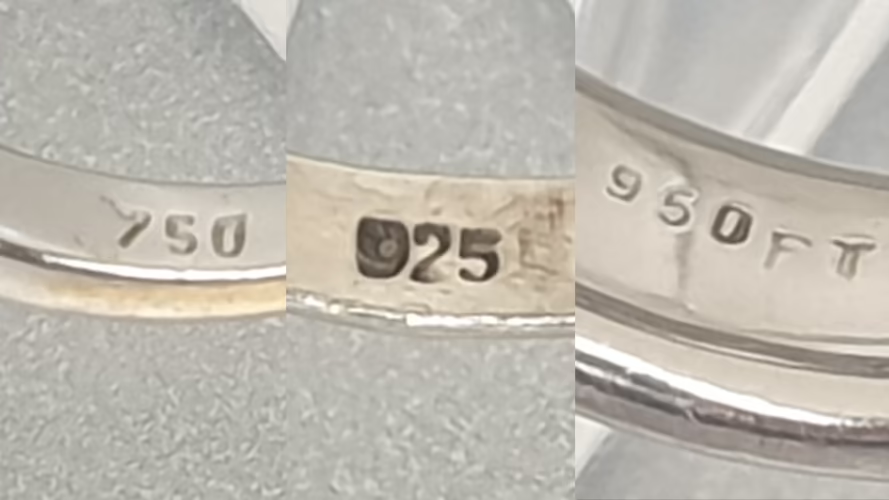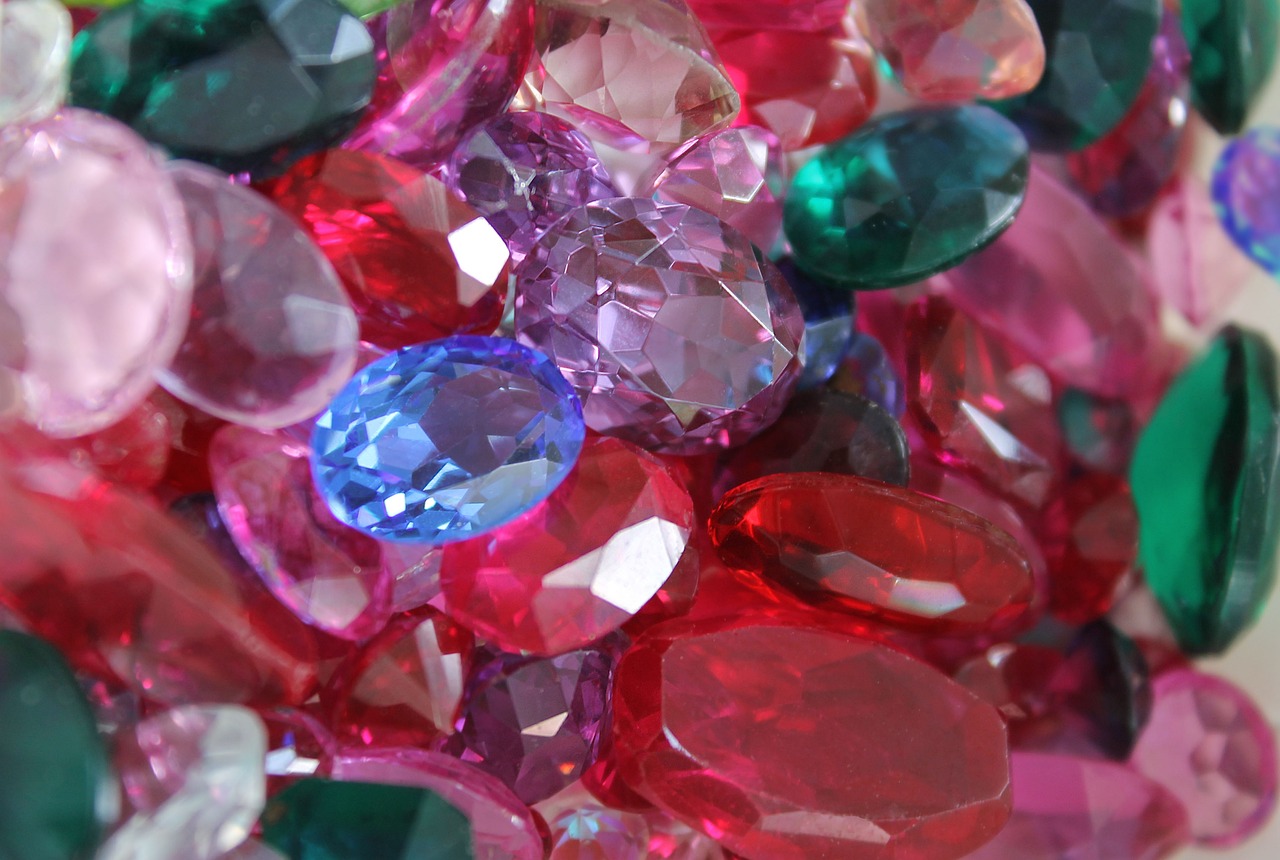Sale of scrap gold and jewellery
Summary
- Scrap gold is damaged or broken jewellery as well as dental gold.
- The hallmarks on gold jewellery provide information about its authenticity and purity.
- There are various methods to check the authenticity of gold jewellery.
- Not only the precious metal of which the jewellery is made has a resale value, but also the precious stones.
Introduction
PreMeSec is a trading platform for precious metals. Here you can sell bars, coins and medals. However, if you want to sell scrap gold, old jewellery or dental gold, you cannot do so with us. In this article you will learn how to recognise scrap gold, which testing methods there are, who buys old gold and how much you should get for scrap gold.
Register and sell scrap gold such as bars and coins through PreMeSec.ch!
Important note: Disclaimer and riskThis blog post is intended solely for informational purposes and the critical assessment of facts. We would like to help you form your own opinion and better understand the financial markets. This text does not constitute investment advice!
|
How can I tell if a piece of jewellery is made of gold?
The Swiss Precious Metals Control, together with the precious metals controls of other countries, has agreed on a uniform hallmarking of precious metal jewellery and articles of daily use (Hallmarking Convention). These hallmarks may, of course, only be applied to genuine objects and not to jewellery that is merely plated (gold-plated or silver-plated). Therefore, if a piece of jewellery bears a hallmark, it can be assumed that it is made entirely of this precious metal.

The hallmark is a number, which in Switzerland is usually between 583 and 950 and is sometimes supplemented by a stylised bar scale. The hallmark number provides information about the purity of the gold used.
Since pure gold is too soft for the production of gold jewellery, it is first alloyed with other metals. This produces different shades of colour, and the resulting gold alloy is often named after the shade, e.g. yellow gold, rose gold, red gold and white gold.
Yellow gold is called gold alloyed with equal parts of silver and copper. The more silver is added, the lighter the shade.
For rose gold, gold is alloyed with copper and sometimes also with silver or platinum.
Red gold is obtained by alloying it with a higher proportion of copper than is required for rose gold. The copper content is about 25 %, so it is gold with a fineness of 750/1000.
By adding 25 % silver, the gold gets a greenish shimmer, it is then called green gold.
White gold is made by alloying it with platinum, palladium, nickel, zinc and silver. Originally, only platinum was used, but since platinum is rare and increasingly valuable, other alloying components were sought to give the gold a whitish colour. To give the gold a silvery sheen, the jewellery is coated with rhodium in a final step, rhodium plating.
Genuine gold jewellery can therefore be recognised by the hallmarking and the colour.

What do the hallmarks on gold jewellery mean?
Karat
Carat is an outdated, but still common indication of fineness for gold products. The fineness is expressed in parts to 24. 24 carat gold is therefore pure gold, 22 carat gold consists of 91.6% pure gold. The lowest carat number that occurs in Switzerland is 9 carats. The number 9 - 24 is supplemented by k or ct.
Indication in parts of thousands
On jewellery, medals and bars, the fineness is given in parts per thousand. On every piece of jewellery you will find the hallmarked number somewhere, for rings mostly on the inside, for necklaces and pendants mostly on the clasp. For red gold, for example, this is 750, as mentioned above.
While gold and silver usually do not bear any additional letters, but can be distinguished solely by the alloy specified for the precious metal, the fineness indication for platinum and palladium must be supplemented either by the word platinum or palladium or their abbreviations Pt or Pd.
Composite goods are an exception. These include, for example, two-coloured necklaces and bracelets whose links consist alternately of gold and silver links. In such cases, both precious metal finenesses must be indicated together with the abbreviation, whereby the metal predominating in terms of quantity must be mentioned first; the hallmarking can then look as follows, for example: Ag 925 / Au 750.
...
| Carat | Parts of 1000 | Alloy application |
|---|---|---|
| 9 k | 375 | Gold jewellery, rare in Switzerland |
| 500 PT or Pd 500 | Platinum or palladium jewellery | |
| 14 k* | 585 | Gold jewellery |
| 18 k | 750 | gold, the most popular jewellery alloy in Switzerland |
| 800 | Silver | |
| 850 PT | Platinum | |
| 900 or 900 PT | Gold Vreneli or platinum jewellery | |
| 22 k | 916 | gold, jewellery alloy and occasional coins. |
| 925 | Silver | |
| 950 PT or Pd 950 | Platinum or Palladium | |
| 24 k | 999 or 999.9 | Fine gold or fine silver, mainly used for bars and coins |
* 14 carats would be 583.3/1000, but are defined as 585 in the Swiss precious metal control legislation.
Abroad, other finenesses than those listed in the table are sometimes used (e.g. gold with 333), but their commercial sale in Switzerland is prohibited by the Precious Metals Control Act.
Significance of gemstone certificates
Some pieces of jewellery are sold together with a certificate of the gemstones incorporated. Since gemstones cannot be refined and standardised like precious metals, each stone must be individually valued according to international standards. In the case of particularly valuable stones, a certificate is issued by a gemological institute for this purpose. These certificates make it easier to determine the value of a stone.
The stones are evaluated according to the following criteria: Size, colour, purity (presence of inclusions and their size), treatment (certain stones can be beautified by chemical or thermal treatment, but are less valuable than stones that achieve the same beauty without treatment), natural or synthetic production, shape, cut.
In Switzerland, for example, there is the Swiss Gemmological Institute in Basel, which evaluates gemstones.
If you have bought a piece of jewellery with a certificate, be sure to keep this certificate.

.
Gold watches
Watches with gold cases and gold bands can also be sold as scrap gold. However, a better price can often be obtained if the watch is sold through a specialised dealer, watchmaker or auctioneer. Defective watches can also fetch a price significantly higher than the material price after repair.
Testing methods for precious metals
Besides stamps and hallmarks, goldsmiths and buyers of scrap gold can also use technical methods to check the authenticity of precious metal goods. Since new methods are constantly being developed for this purpose, only a few will be mentioned here in extracts. It should be noted that a test alone is hardly meaningful.
Acid test
Gold is very resistant to acids. By rubbing gold off the piece of jewellery and then dissolving the abrasion with acid, the authenticity and the alloy can be determined. This test requires material to be rubbed off the piece of jewellery and is therefore not non-destructive. Another disadvantage of the test is that, of course, only material can be removed from the surface and thus it is not possible to determine whether the piece of jewellery is perhaps only gold-plated.
Calculating the density
Since every material has its own density, the density can be used to determine the material. To do this, however, the volume of the object must be calculated, which is very time-consuming in the case of shapeless jewellery or jewellery set with precious stones.
Another problem is that tungsten has a very similar density to gold, so it can be difficult to distinguish gold from tungsten using density alone.
Magnetic scale
Gold has a similar density to tungsten, and the density of silver is close to that of lead. Unlike tungsten and lead, however, the two precious metals are diamagnetic. That is, they repel magnets instead of attracting them. The test with the magnetic balance makes use of this effect. The repulsive or attractive force of an object is measured with a very precise balance.
Sound conductivity
The sound conductivity of a material is just as specific as its density. However, since it requires a body of a certain size, it is most suitable for ingots. Thus, nuclei of another metal can be detected in the ingot.
X-ray fluorescence analysis
In this analysis, the material is bombarded with X-rays. As a physical reaction to the bombardment, the material emits element-specific fluorescence radiation. From this, the material can be determined. This examination option is non-destructive and can also provide information about the composition in deeper layers of the sample. The disadvantage, however, is that the analytical equipment is very expensive.
Electrical eddy current measurement
The electrical conductivity of precious metals can be easily distinguished from the conductivity of base metals. Devices that induce a current in an object with the help of a magnetic field can therefore be used to determine the material. This test method is non-destructive and can also be used through packaging.
Frequently asked questions about scrap gold
Where can I sell broken gold and old gold jewellery?
-
The best place is the goldsmith from whom you have already bought jewellery. Especially if you have already bought jewellery from a goldsmith and thus have a basis of trust, it is a good idea to also sell your old gold at this goldsmith. This has the advantage that particularly beautiful and sought-after pieces can be refurbished by the goldsmith and sold again, thus eliminating the need for expensive melting down.
Unfortunately, there are many negative reports about gold buyers who distribute flyers and buy gold in back rooms, which is why caution is advised here.
Are the gemstones in the jewellery still worth anything?
-
Depending on the design of the jewellery, it may contain more or less valuable gemstones. In jewellery with diamonds or other very valuable gemstones, the value of the stone can far exceed the value of the metal. Unfortunately, the value of gemstones is not so easy to determine for the layman, especially here it is advisable to resort to the expertise of a trustworthy goldsmith.
Should defective gold watches be sold as scrap gold?
-
No, gold watches are often worth more if they are not melted down. A repair or revision before selling can also be worthwhile. Especially popular brands fetch prices that are significantly higher than the material price.
How much money do I get for old/scrap gold?
-
According to the former president of the goldsmiths' association, goldsmiths pay 66 to 90 percent of the gold price as the melting price. The deductions from the gold price result from the goldsmith's appraisal costs, the exchange rate hedging costs and the melting costs of the scrap gold.
https://www.srf.ch/sendungen/kassensturz-espresso/altgold-verkauf-vorsicht-vor-dubiosen-haendlern
If the goldsmith can refurbish a particularly beautiful piece and sell it on commission, even higher prices are possible.
